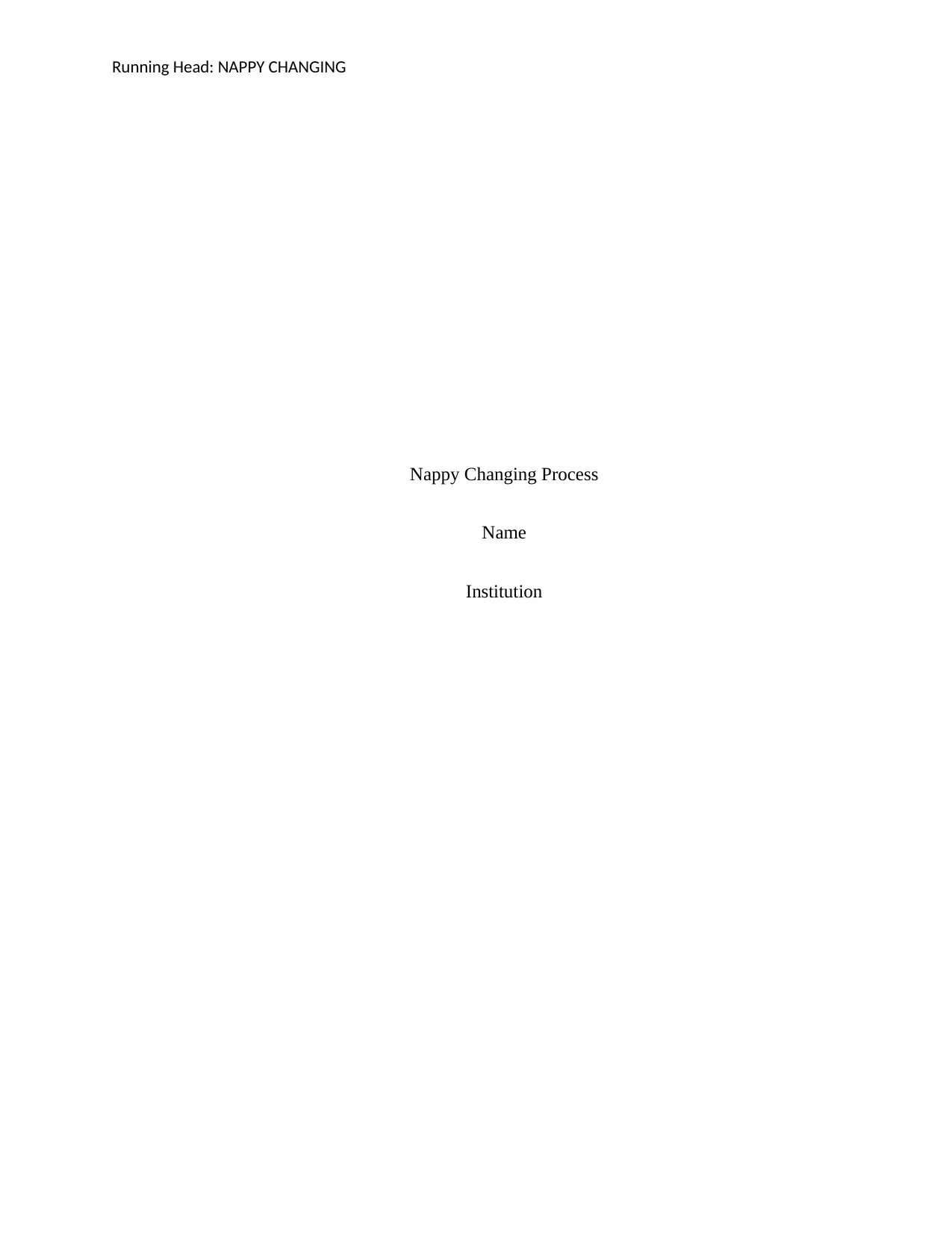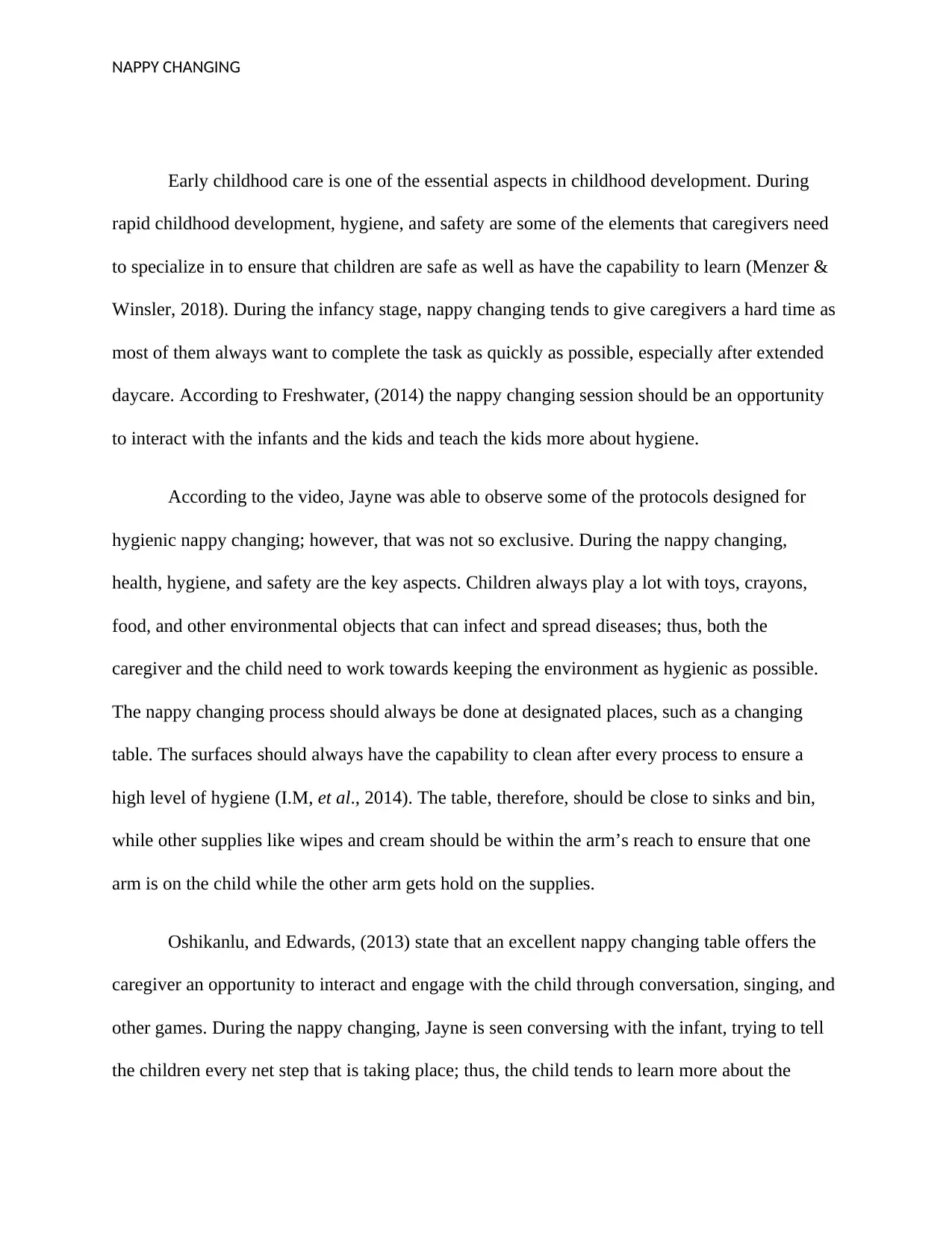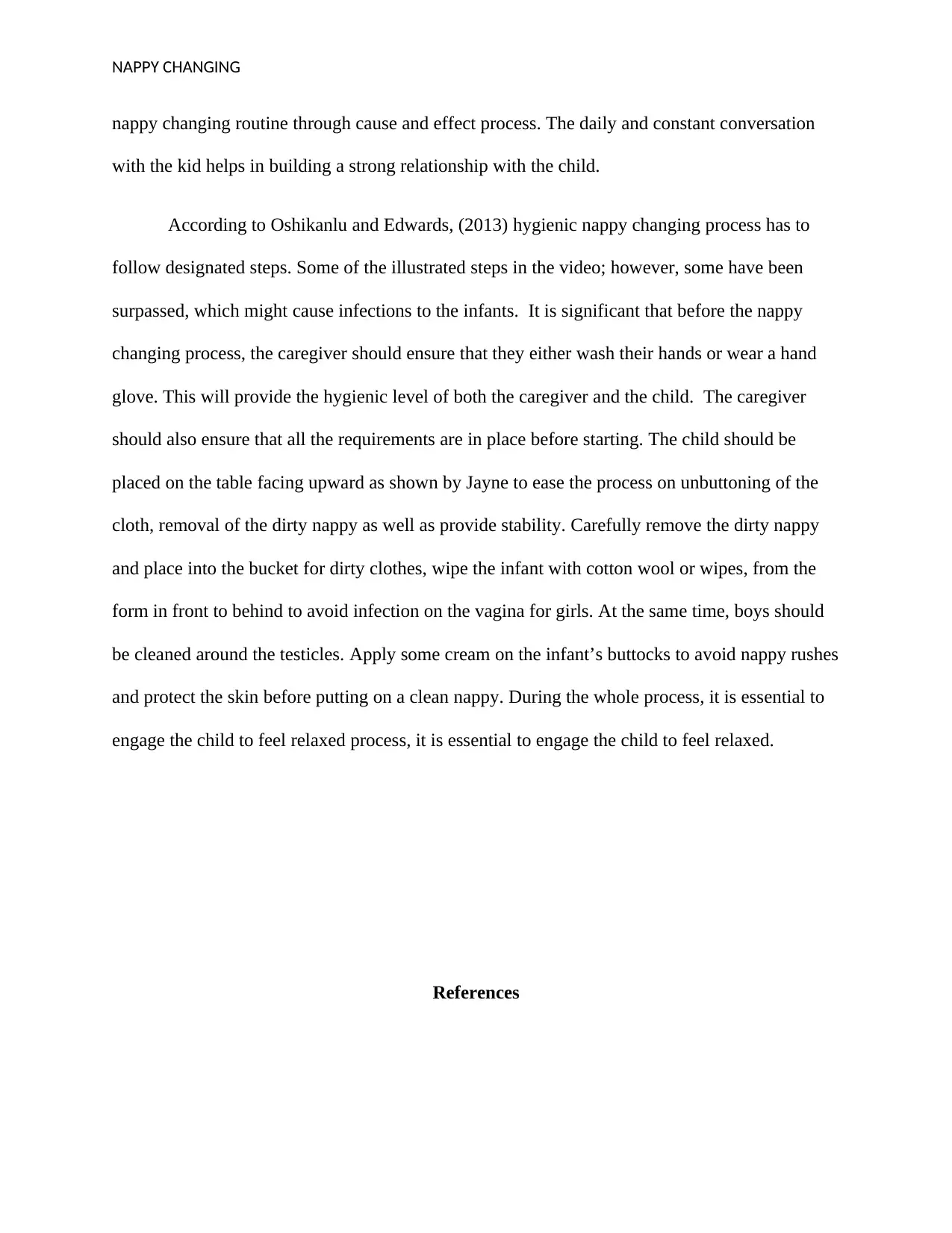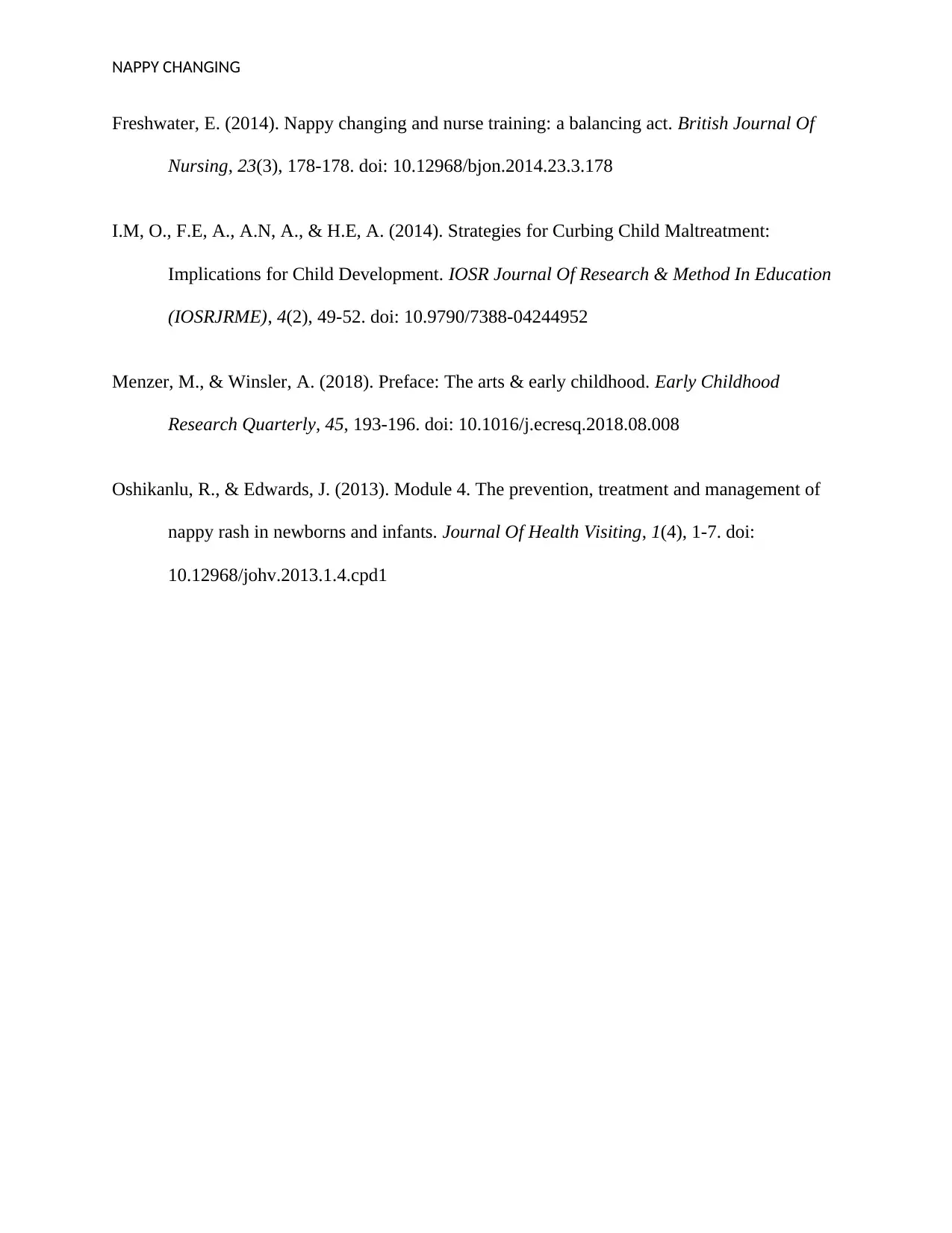Importance of Safe and Effective Nappy Changing in ECE
VerifiedAdded on 2022/08/22
|4
|809
|20
Report
AI Summary
This report examines the nappy changing process within the context of early childhood education (ECE), focusing on the importance of safe and effective pedagogical practices. The report analyzes the key aspects of safety and hygiene, highlighting the need for designated changing areas, proper hand hygiene, and thorough cleaning procedures. It emphasizes the role of routines as curriculum, illustrating how nappy changing can be an opportunity for interaction, conversation, and teaching children about hygiene. The report references relevant literature and ECE guidelines, including EYLF and NHMRC guidelines, to support the importance of these practices. The report also discusses the importance of record-keeping and the role of the ECE teacher in creating a positive and educational experience during nappy changing. The student has included the importance of using the right supplies and engaging with the infant to make the experience a positive one. Overall, the report underscores the significance of nappy changing as a routine that contributes to children's development and well-being.
1 out of 4









![[object Object]](/_next/static/media/star-bottom.7253800d.svg)